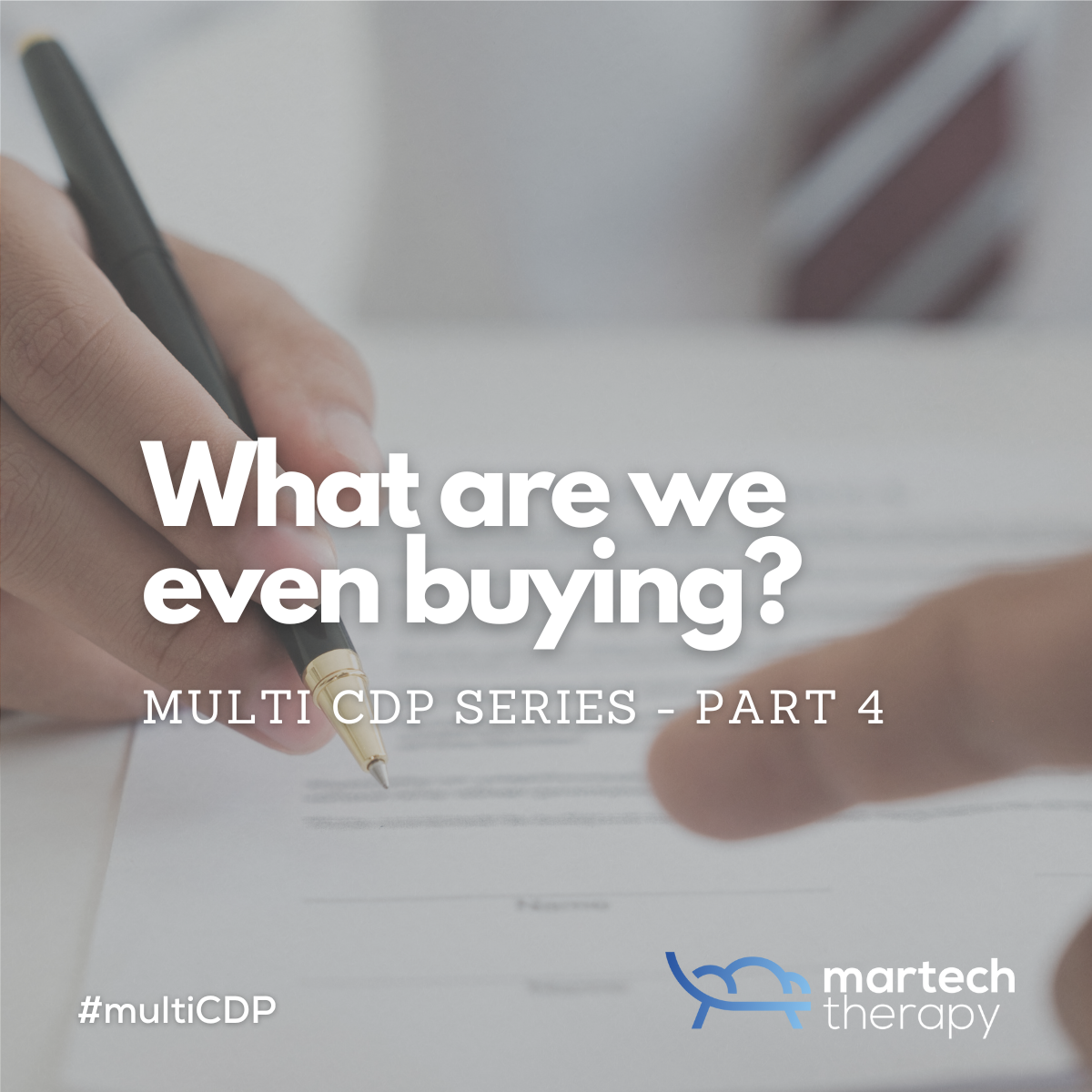Let’s be honest with ourselves, this was never just about software.
If you’ve made it through parts 1, 2, and 3 of this series, you’ve seen how most organizations don’t run on a single CDP, but on a patchwork of tools that reflect team priorities, governance gaps, and the relentless pressure to just keep moving.
The industry has started catching on. In the July 2025 CDP Institute Industry Update, David Raab offered a sharp summary of where we’ve landed:
“The term CDP has become a catch-all that includes everything from CRM-lite orchestration tools to complex, privacy-centric identity engines.”
Or as Kristina Kalpokaite recently wrote it in her article on MarTech.org “Nobody knows what a CDP is anymore — and that’s the problem”. In her article, she correctly describes how CDPs lost touch with what companies need and can deal with:
“One new invention triggered a new requirement, which triggered another invention. A cycle of constant addition, chasing competitive parity, not actual utility.”
It’s not that the tools don’t work; they obviously do when you look at investment projections. It’s that the term CDP now stretches so far it can describe:
- A batch modeler syncing audiences to ad platforms
- A warehouse-native connector layer
- A full-blown real-time decisioning system
- A regional campaign tool with basic profiles
And yes, sometimes all of those exist in the same company, but do they need all the features? Or as Kristina would most likely put it, “do they know what it even does?”.
The false promise of consolidation
From the beginning, CDPs were sold as the antidote to Martech sprawl. A central source of truth. One platform to rule them all.
But it was always more of a hope than a plan. Governance isn't something you can buy. And coordination doesn't automatically emerge just because you routed events to the same endpoint.
In reality, most CDPs were adopted adjacent to other systems, not instead of them. CRM, ESP, data warehouse, digital analytics, tagging systems... the CDP sat alongside them, trying to harmonize what was already too fractured.
So when we see companies using 2.1 CDPs on average, it doesn’t necessarily mean consolidation has failed. It often reveals what actually happens when you try to serve multiple teams with one platform… and fall short.
Not one thing, but many
What we’re seeing now isn’t really a directional change. It’s a realization, an awakening that CDPs are not a product category, they’re a set of overlapping capabilities that have been marketed as such. And that companies assemble those capabilities based on:
- Their organizational model
- Their technical maturity
- Their channel mix
- Their leadership’s appetite for control vs. flexibility
- Their budget
The tools haven’t changed as much as the expectations around them. And when real-time engagement became the new default, even composable vendors like Hightouch and Snowplow began expanding into more activation-friendly territory. It’s more than a product roadmap tweak. They simply acknowledge the demands and dynamics of the Engagement Zone.
So if CDPs were born in the Data Zone and later pulled toward Engagement, what we’re really witnessing has less to do with deliberate expansion and more to do with how teams and needs have gradually pulled CDPs into new territory.
Kristina put it succinctly: “The category’s splintering, the label is losing meaning and vendors are scrambling for new names.”
As David Chan’s Dual Zone framing reminds us, the internal tensions we’re seeing aren’t new. They’re just more visible now and are making us think twice about our next step, maybe even adjusting our expectations of what CDPs can deliver in a positive way. And stop wondering what category label even means at this point?
Where this leaves us
If you’re working in Martech in 2025, remember, you don’t need another category definition. Frans Riemersma and Scott Brinker are busy enough with the 15.000+ solutions in the market as of this year. What you need is a way to understand what your stack actually does and what it doesn't. And that starts by asking:
- What job does each CDP (or CDP-like tool) actually do?
- Who relies on it, and for what outcomes?
- What happens when it fails?
- And is there a better way to draw the zones on paper, not in theory?
I won’t pretend there's a clean solution because every company is unique. But I’ve seen better questions bring better decisions. And in most organizations, that’s more useful than one more CDP replacement project.
Thanks for sticking with me through this four-part series. If any of it hits a nerve or sounds like what’s happening in your world, drop me a line. I work with organizations across verticals and geographies, helping make sense of CDPs and the tangled architectures around them. Whether you’re in B2C, B2B, or something in between, there’s usually a path forward once the real questions surface. Always happy to compare notes.
Or follow me here on Substack for more therapeutic insights on Martech 👇🏻



Discussion